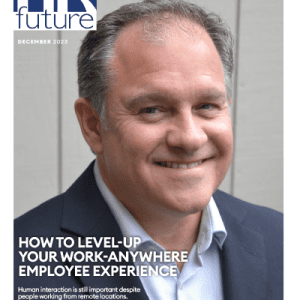With the ever-changing and dynamic business environment, organisations are compelled to utilise people analytics to facilitate data-directed decision-making and augment performance and effectiveness (Peeters et al., 2020; Opatha, 2020). More specifically, interest has heightened in understanding how people’s insights can drive excellent employee experiences (Styr, 2021).
According to Enderes and Shannon (2019), high-performance organisations are three times more likely to invest and venture into analytical tools and frameworks and experience significant financial results. Incorporating predictive people-data analytics into organisational processes, including recruitment, engagement, and development, provides deep and unparalleled insights into what mobilises employee functioning (Arellano et al., 2022). Moreover, by using data and algorithms, organisations can generate more accurate and unbiased predictions and insights (AssessFirst, 2023).
One such approach that has gained significant traction is that of predictive people analytics. This emerging field combines advanced analytics techniques with human resources data to uncover valuable insights into employee behaviour, performance, and engagement. By leveraging these insights, organisations can make informed decisions and design strategies that enhance the employee experience, drive engagement, and boost overall performance.
So, what exactly are predictive people analytics, and why are they significant within a dynamic business environment? Predictive people analytics is the practice of analysing historical and real-time data to identify patterns, trends, and correlations related to employee behaviour and performance. It involves collecting data from various sources, such as performance reviews, employee surveys, time-tracking systems, and even social media, and applying statistical models and machine learning algorithms to predict future outcomes.
In a dynamic business environment of constant change and fierce competition, predictive people analytics provides organisations with a proactive and strategic approach to managing their workforce. By leveraging the power of data, organisations can anticipate talent needs, identify potential issues, and implement targeted interventions to optimise employee engagement, development, and productivity. This data-driven decision-making can help organisations stay agile and adapt to changing market conditions, improving business performance.
The latest research in the field of people analytics offers valuable insights into supporting a better employee experience. By analysing data, organisations can identify key factors influencing employee satisfaction, motivation, and well-being. For instance, research has shown that factors such as meaningful work, career development opportunities, work-life balance, and a positive organisational culture significantly impact employee engagement and retention. Armed with these insights, organisations can tailor their policies, programs, and initiatives to address specific areas of improvement, ultimately enhancing the overall employee experience.
Furthermore, people analytics tools and technologies play a crucial role in driving greater employee engagement and performance. These tools enable organisations to track employee feedback, performance metrics, and other relevant data in real time. By providing employees with timely feedback and personalised development opportunities, organisations can foster a culture of continuous learning and growth. Moreover, by leveraging advanced analytics techniques, organisations can identify high-potential employees, create effective succession plans, and implement targeted training programs to nurture talent and drive better performance.
The application of people analytics can address several challenges faced by organizations across various HR functions. In the area of selection, predictive people analytics can help identify the best-fit candidates by analysing historical data of successful hires, thus improving the recruitment process. For engagement, analytics can uncover insights into factors influencing employee satisfaction and well-being, enabling organisations to design targeted interventions.
In terms of development, people analytics can identify skill gaps and recommend personalized learning paths to support employees’ professional growth. Additionally, by analysing productivity data, organizations can identify bottlenecks, optimize workflows, and improve overall operational efficiency.
Real-world examples demonstrate the tangible benefits of utilising people analytics to enhance the employee experience. For instance, a technology company used predictive people analytics to identify employees at risk of leaving the organisation. They developed a model that accurately predicted attrition by analysing various data points such as performance ratings, promotion history, and employee feedback. Armed with these insights, the company implemented retention strategies and personalised interventions, significantly decreasing turnover and increasing employee satisfaction.
While the potential benefits of people analytics are substantial, it is crucial to consider ethical considerations when utilising these tools. Organisations must ensure that data collection, analysis, and decision-making processes are conducted in a fair and transparent manner, with proper safeguards in place to protect employee privacy.
It is essential to obtain informed consent from employees and use anonymised data whenever possible. Additionally, organizations must guard against biases that may emerge from the data or algorithms used, as biased decisions can perpetuate inequality and discrimination.
In conclusion, predictive people analytics has emerged as a powerful tool in today’s dynamic business environment. By leveraging data and advanced analytics techniques, organisations can gain valuable insights into employee behaviour, performance, and engagement. These insights enable organisations to make data-driven decisions, enhance the employee experience, and drive greater engagement and performance.
However, ethical considerations must be carefully addressed to ensure fairness, privacy, and protection against biases. With the right approach, people analytics can revolutionise how organisations manage their workforce and create a positive, engaging, and productive work environment. To remain agile in an increasingly dynamic business environment, organisations must investigate the digital tools and technologies to facilitate personalised employee support and informed talent strategies –enhancing the employee experience.
References
Arellano, C., DiLeonardo, A., & Felix, I. (2022, April 28). Using people analytics to drive business performance: A case study. McKinsey & Company. https://www.mckinsey.com/capabilities/quantumblack/our-insights/using-people-analytics-to-drive-business-performance-a-case-study
AssessFirst. (2023, February 3). Predictive People Analytics for Talent Acquisition and Management. https://www.assessfirst.com/en/predictive-hr-solutions/
Enderes, K., & Shannon, M. (2019). People analytics solutions: Market primer. In Deloitte. Deloitte. https://www2.deloitte.com/content/dam/Deloitte/us/Documents/human-capital/us-human-capital-bersin-lt-people-analytics-solutions-market-primer.pdf
Peeters, T., Paauwe, J., & Van De Voorde, K. (2020). People analytics effectiveness: developing a framework. Journal of Organizational Effectiveness: People and Performance, 7(2), 203–219. https://doi.org/10.1108/joepp-04-2020-0071
Opatha, H. H. D. P. J. (2020). HR analytics: A literature review and new conceptual model. International Journal of Scientific and Research Publications, 10(6), 130–141. https://doi.org/10.29322/IJSRP.10.06.2020.p10217
Styr, C. (2021, September 30). The Role of People Analytics in Employee Experience. myHRfuture. https://www.myhrfuture.com/blog/2021/9/30/the-role-of-people-analytics-in-employee-experience


















